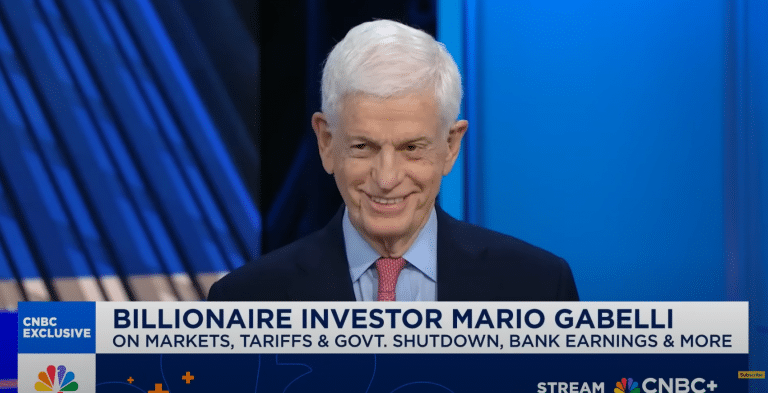Offshore Wind – Five Key Questions for Investors
The offshore wind sector exemplifies the volatile ride of renewable energy stocks over the past seven years. First share prices of offshore wind stocks rallied when investors were willing to pay a premium for green energy producers in a low interest rate environment until sentiment peaked at the start of 2021, which was then followed by a multi-year industry downturn when interest rates started to rise and post-COVID supply chain shortages led to cost overruns that triggered project delays and/or cancellations of offshore wind developments. As offshore wind farms are capital-intensive investment projects that are highly dependent on debt financing, rising interest rates had hit the offshore wind industry particularly hard over the past years.
Not surprisingly, Orsted, which provides the best proxy for an offshore wind farm operator (as around 80% of its EBITDA comes from offshore wind power generation) has posted negative share price returns over the past 5 years and has noticeably underperformed the MSCI World Utilities index as well as the S&P Global Clean Energy Index since 2020 (see Table 1). Similarly, wind turbine manufacturers have also suffered share price declines over the past five years and our “Offshore Wind Turbine index”, which consists of three energy companies, has also noticeably underperformed the MSCI World Energy index since 2020 (see also Table 1).
After the prolonged underperformance, this White Paper attempts to answer five key questions about the offshore wind market for investors who may want to take a fresh look at this beaten-down sector.
Table 1 Index Performances

Source: Thomson ONE (returns as of 15 July 2025)
Exhibit 1 Indexed Share Price Development (1 Year)

Source: Thomson ONE (last data point 15 July 2025)
1) How big is the addressable market and how fast is it growing?
At the end of 2024, 313 offshore wind farms were in operation, of which 181 were located in Asia, 129 in Europe and 3 in the USA. According to WorldForumOffshoreWind (WFO), global offshore wind capacity has grown seven-fold over the past ten years, from 11 GW in 2015 to 79 GW in 2024. Over the next ten years, the Global Wind Energy Council (GWEC) projects that the installed offshore wind capacity will grow almost five-fold to 390 GW by 2034 (see Exhibit 2).
After the US has paused all approvals for the leasing of federal waters for new offshore wind projects, capacity growth for US offshore wind farms is expected to slow over the next few years. Furthermore, the recently signed US Tax Legislation requires that new offshore wind projects (similar to onshore wind) will be placed in service by year-end 2027 to receive tax credits, while new projects that begin construction up until July 4, 2026 (12-months after implementation date) are safe-harbored and can only receive the full tax credit when completed in four years. Thus, it seems likely that already under-construction US offshore wind projects (South Fork, Revolution, Vineyard 1, Coastal Virginia, and Sunrise) will move forward and receive full tax credits, while no new offshore wind projects will get FID because actions by the new administration and Bureau of Ocean Energy Management (BOEM) to slow approvals (permitting, siting, safety, environmental) would make it unlikely to meet a four year completion date.
Accordingly, while Asia is projected to capture the biggest share of new offshore wind installations over the next ten years, Europe is now seen as the offshore wind market with the strongest growth potential, reaching average annual growth rates (2024-34 CAGR) of 23% compared to 19% in Asia. By 2034, GWEC projects that annual offshore wind installations could reach 21.4 GW in Europe compared to 29.5 GW in Asia (see Exhibit 2). New offshore wind projects in the USA after 2030 would require a policy change by future US administrations.
Exhibit 2 Global Offshore Wind: Annual Capacity Additions and Installed Capacity (GW)

The growth in offshore wind installations will be driven by several countries, which have emerged as the leading offshore wind markets, and China is projected to capture more than one third of the global offshore wind market share by 2034 (20 GW, see Exhibit 3). In Europe, the growth markets will be the UK and Germany (both reaching about 2 GW, or 10% of China’s capacity by 2034) but increasingly also Poland and the Netherlands. In Asia, most growth outside of China is expected to come from island states Taiwan and Japan, but also from South Korea and possibly Australia in later years.
Exhibit 3 Projected Annual Offshore Wind Capacity Additions by Country (GW)

As in many other industries, China’s growth in offshore wind installations has also been staggering over the past ten years as China still had less than 1 GW of installed wind capacity in 2015. Until 2020, the UK had been the global leader in offshore wind installations, closely followed by China and Germany, according to data from the International Renewable Energy Agency (IRENA). But over the past four years, China’s growth in offshore wind installations has outpaced the rest of the world and has reached 39 GW in 2024, which accounted for 50% of global offshore wind capacity (see Exhibit 4).
Exhibit 4 Leading Offshore Wind Markets (Installed Capacity in GW)

However, the share of offshore wind capacity as part of the total installed renewable energy capacity (wind plus solar) varies widely across these leading offshore wind markets (see Exhibit 5). While China has by far the largest installed capacity, the share of offshore wind relative to total wind and solar installations remains low in China as it increased from 0.3% in 2015 to only 2.8% on 2024 because onshore wind and solar energy remain the dominant sources of renewable energy generation in China.
Exhibit 5 Offshore Wind as % of Wind & Solar Energy Mix in Leading Offshore Wind Markets

Conversely, offshore wind accounted for almost one third (30%) of total wind and solar energy capacity in the UK and represented 24% in Denmark in 2024. Belgium and the Netherlands had reached similar offshore wind penetration rates in 2020, but as the focus had shifted in both countries to onshore wind and solar energy in subsequent years, the relative share of offshore wind had declined accordingly by 2024.
If the world wants to achieve the Paris climate goals, the International Energy Agency (IEA) projects that offshore wind will need to become a $1.3 trillion business globally until 2024 because reaching net zero emissions by 2050 requires a faster buildout of large-scale offshore wind capacity with annual investments of $52 billion globally per year until 2030 and $66 billion annually from 2031 until 2040.
The IEA estimates that the majority of the offshore wind investments will be targeted in Europe and in Asia until 2040, with almost half of total global investments expected to be spent in Europe ($498 billion) and in China ($295 billion). Not surprisingly, the share of electricity generated from offshore wind is also projected to increase noticeably in Europe and could reach EU-wide 19% by 2040. In contrast, in China, the share of electricity generated from offshore wind is projected to remain fairly low and grow to only 5% by 2040.
2) What is an Offshore Wind Farm?
Power generation from offshore wind was close to zero in 2015, but has the potential to become a mainstay of the
world’s electricity supply by 2040. Rapid technological improvements will allow offshore wind installations to move into deeper waters farther away from shore (currently offshore installations are mostly limited to 60 meters water depth within 60 km from shore) and to develop floating offshore wind farms by using floating foundation technologies that have already been deployed in the offshore oil and gas sector (see Exhibit 6).
Exhibit 6 Floating vs. Bottom-Fixed Offshore Wind

Most offshore wind farms have been built in water depths of 30–60 meters and the most popular foundation is the tubular steel monopile, which is driven into the seabed. In water depths greater than 60 meters, it becomes more economical to use floating foundations. Accordingly, the floating offshore wind market is also rapidly developing and GWEC is projecting that this market segment could grow to 19 GW by 2034 and capture about 5% of the total offshore wind market by 2034. The biggest floating offshore wind markets are projected to be the UK, South Korea and China.
Offshore wind turbines use a three-bladed rotor connected to a nacelle, which houses the equipment that translates the rotational energy of the rotor into electrical energy. Turbine suppliers continue to develop new turbines that are larger, more reliable and easier to maintain. This reduces costs and increases electricity production. Large-scale offshore wind farms need a substation to transform voltages and reduce transmission losses when transmitting the electricity to onshore grid connections via subsea cables. Subsea cables are copper or aluminum cables, which are protected by insulation and are buried under the seabed to reduce the risk of damage.
Nearly half of the total costs for offshore wind farms are directly attributable to the capital investment, including the costs of wind turbines, foundations, internal cabling, substations and offshore transmission assets (see Exhibit 7). The remaining half is attributable to project financing costs, reflecting the high capital intensity of offshore wind projects. Cheaper project financing terms can significantly reduce the total costs for offshore wind projects. For example, a lower WACC of 4% reduces the total offshore wind project costs by about 30% compared to the costs derived from the standard WACC of 8%.
Exhibit 7 Offshore Wind Capital Costs Exhibit 8 Critical Minerals required for Clean Energy


While the types of mineral resources vary by technology, copper is an essential element for almost all electricity-related clean energy technologies, especially for offshore wind, which also requires the highest amount of critical minerals per installed MW capacity (see Exhibit 8). As offshore wind has a higher mineral intensity compared to onshore wind and solar, it also needs more copper and zinc than other clean energy technologies in the production process. In addition, rare earth elements are also crucial for powerful magnets that are vital for wind turbines.
3) When will Offshore Wind become cost-competitive?
Whether offshore wind can achieve the above projected capacity growth will depend on how quickly offshore wind installation costs will fall to become more competitive with onshore wind, solar energy and gas-fired power generation. In recent years, the levelized cost of electricity (LCOE) for all renewable energy technologies (onshore wind, offshore wind and solar) have already declined due to technological improvements and cost reductions. The IEA calculates the so-called “value-adjusted levelized cost of electricity” (VALCOE) for these technologies, which incorporates information on the value provided by each technology to the energy system. In addition to the cost calculation, the VALCOE also considers each technology’s additional value stemming from provided reserve capacity and generation flexibility.
The VALCOE for offshore wind is currently higher than that for onshore wind and for solar PV in all regions (except in Europe, see Exhibit 9). Until 2050, the IEA projects that the VALCOE for offshore wind will decline between 40-60% in most regions to become cost-competitive with onshore wind and solar energy. The VALCOE for gas fired power generation (CCGT) is projected to increase in the USA and in Europe after taking rising CO2 prices into account. However, in order to achieve these VALCOE reductions for offshore wind until 2050, the capacity factors will have to increase (by using bigger turbines), while the capital and operating costs must decline by about 50% through more efficient supply chains and technological improvements (and material cost inflation from rising steel prices needs to be avoided).
If these cost reductions should materialize, the IEA projects that offshore wind will become even more cost- competitive than solar PV in Europe by 2050. In October 2023, the European Commission confirmed the EU Strategy for Offshore Renewable Energy, which targets at least 300 GW of offshore wind capacity by 2050 in order to reach its net zero emission targets by 2050. Given the strong policy support from the EU, the projected share of offshore wind in Europe’s power generation mix could reach between 20 and 25% by 2050 (based on estimates from different forecasting agencies).
Exhibit 9 Value-adjusted Levelized Cost of Electricity (USD/MWh)

4) Which companies generate electricity from Offshore Wind?
Similar to the “oil majors”, which dominate the global oil and gas industry, a few “offshore wind majors” have emerged that dominate the global offshore wind market. Offshore wind projects are large investments and require a strong balance sheet for the initial project financing before the operating companies can later “farm down” equity stakes in their projects once the wind farms are up and running (i.e. sell minority stakes to financial investors). Offshore wind also poses a real engineering challenge, which requires highly skilled personnel with specific project experience. Finally, a proven track record for delivering complex offshore projects makes it easier to win new projects and to secure financing from banks.
As the European utilities have moved earlier into the offshore wind space, three of the top five offshore wind companies are European utilities (Orsted, Vattenfall and RWE). These top three are followed by Dominion Energy in the USA (with its 2.6 GW of the Coastal Virginia Offshore Wind project currently under development) and the Chinese utility China Longyuan, which has a growing offshore wind portfolio that currently accounts for about 6% of its total power generation capacity.
Among European utilities, Orsted is by far the leader in offshore wind with an installed capacity of 9.9 GW, which accounts for more than half (54%) of the company’s power generation capacity, with the remainder coming from onshore wind (34%) and bioenergy/solar (12%). Orsted’s decision to enter the offshore wind market already in 2008 has helped the company to build scale and expertise in this market segment. Vattenfall, the private Swedish utility, is operating its offshore wind farms only in key European markets (Denmark, Netherlands, UK and Germany) and has developed the first non-subsidized 1.5 GW offshore wind farm in the Netherlands (Hollandskust Zuid). RWE intends to almost double its offshore wind capacity until 2027 from currently 3.5 GW by adding about 3.1 GW in the UK, Denmark and Germany over the next two years.
Offshore wind has also been the logical choice for the oil majors to decarbonize their upstream portfolios as it is the renewable energy technology that is most similar to offshore oil and gas projects in their traditional upstream businesses. Offshore wind projects have become larger and more complex the farther they have moved into deeper waters; therefore, the oil majors have benefited from their offshore oil and gas engineering expertise and from strong balance sheets to get access to cheap project financing. However, after the 2019-2023 offshore boom years when the oil majors had pledged to become world leaders in offshore wind and started to add offshore wind capacity to their upstream portfolios (see Exhibit 10), the pendulum has swung back over the last year when several European oil majors announced the retreat from renewable energy in general and from offshore wind in particular to refocus growth capex on their traditional oil and gas businesses (partly also based on pressure from activist investors)
In December 2024, Shell said it would not initiate any new offshore wind projects (only develop its existing pipeline) and BP announced it would move its offshore wind business into a 50/50 joint venture with Japanese power generation company Jera. In contrast, Equinor remains committed to growing its offshore wind business (and to completing the Empire Wind project offshore New York in the USA) and it purchased a 10% stake in Orsted in 2024. Similarly, while TotalEnergies, which has currently the largest offshore wind capacity among the oil majors, has stopped its offshore wind projects in New York and in New Jersey (after the US administration halted the permitting of new projects), the French oil major continues to invest in offshore wind outside the USA.
Exhibit 10 Offshore Wind Capacity (in GW) of Utilities and Oil Majors

5) Which industries operate along the Offshore Wind Value Chain?
At this year’s 2025 Global Offshore Wind conference in London, the overarching message from equipment suppliers was one of capital discipline and that the offshore equipment market remains tight. Despite order cancellations of several offshore wind projects in the US and in the UK, equipment companies appear to have gained some market power by putting cost indexation for their contracts in place. It also became clear at the conference that China’s influence is growing internationally in the offshore wind market, as Chinese suppliers are winning more orders, both for offshore wind turbines and for offshore cables.
Wind turbines are getting bigger: Wind turbine manufacturers are the main beneficiaries from the projected growth in offshore wind installations. The offshore wind turbine market is a highly concentrated industry with only five global suppliers. Besides the two dominant European manufacturers, Vestas Wind and Siemens Energy, GE Vernova emerged as a new US-based wind turbine company after it was spun-off from General Electric in 2024. In Asia, the Chinese turbine manufacturers Goldwind and Ming Yang have developed into strong competitors for European turbine manufacturers as Ming Yang was selected as the preferred wind turbine supplier for offshore wind projects in Germany and in Italy and multiple Chinese turbine suppliers were mentioned in winning bids for European offshore wind sites.
The trend for offshore wind turbines is to build larger blades and higher towers (see Exhibit 11). A larger turbine diameter captures more wind and increases the power output, while longer blades can improve yields at a specific wind site for a given wind speed. As GE Vernova works to extend its Haliade-X turbine (220-meters rotor blade diameter) to 14 MW, Siemens Energy has developed the SG 14–222 DD blade, which has a 222-meter rotor blade diameter and nominal power of 14 MW (up to 15 MW with a “Power Boost”) for which the serial production started in 2024. Finally, Vestas Wind has introduced its V236–15 MW turbine with a 326-meter rotor blade diameter in February 2021, for which it has secured more than 13 GW of firm orders.
There are two different technologies for offshore wind turbines. While GE Vernova and Siemens Energy use direct drive technology, Vestas Wind uses a gearbox technology. The main benefit of the direct drive technology is lower maintenance costs due to fewer moving parts. But it remains to be seen which technology will turn out to be the most competitive.
Exhibit 11 Growth Trend of Offshore Turbine Size in metres (1980-2030)

Offshore Cables and Installation Equipment: Transmission and inter-array cables account for 20–30% of offshore wind costs. According to Prysmian, 1 GW of offshore wind requires around €300 million of equipment, including submarine transmission cables (AC or DC), land transmission cables (AC or DC), inter-array cables plus the installation costs.
Transmission equipment is in short supply and the wait time for a grid transformer can be around 3-4 years, according to Hitachi Energy. On average, pricing has increased 20% in the past 2-3 years, with 4-6% YoY increases expected to be the norm going forward. The timeline for HVDC equipment is typically 6-8 years, which is a major constraint for project developers. Allocation of new transmission equipment is not just about price, but whether the developer is prepared to make long-term commitments and prepayments.
For submarine cables, Prysmian is the market leader with a 40% market share before Nexans (21%) and NKT (14%). Prysmian is the most diversified cable company with exposure to offshore wind (8% of revenues), interconnections (8%), as well as land cables for high and medium voltage distribution. Nexans has a higher exposure to offshore wind (14% of revenues) and interconnections (14%). After purchasing ABB’s cable business in 2016, NKT has the highest offshore wind exposure, which accounts for 42% of revenues and 25% of its interconnections business.
Chinese companies are gaining traction in the offshore wind equipment market as three Chinese foundation fabricators were awarded contracts for European projects and Chinese offshore wind cable manufacturers, Hengtong and Orient Cable, were awarded cable supply contracts in South Korea and in the UK. Similarly, Chinese Orient Cable supplies transmission cables for Tennet’s offshore wind transmission grid and for Orsted’s Baltica projects.
The company says there is a minimum of three years wait time for transmission export cables. The company has currently two factories operating in China and is in process of completing the construction of its third factory next year. Besides 10-15% lower cable prices vis-a-vis European competitors (such as Prysmian) due to cost advantages (lower labor and energy costs), Orient Cable competes on delivery capability (i.e. quicker delivery times) and its consistently good cable quality.
Table 2 Valuations For Offshore Wind Sector Stocks

Table 3 Earnings For Offshore Wind Sector Stocks

Source: Thomson ONE consensus estimates (share prices and valuations as of 15 July, 2025)










